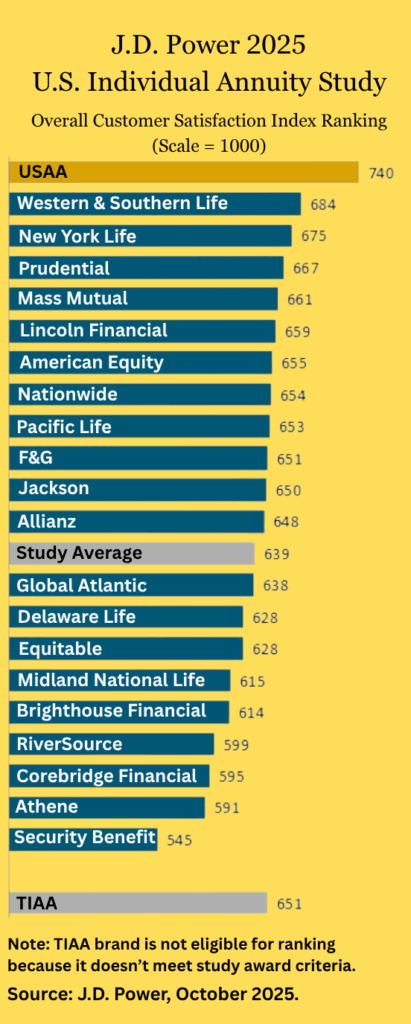
The other night I pondered a familiar puzzle: Why aren’t advisors more receptive to annuities and annuity wholesalers, especially at a time when so many of their older clients are transitioning into the “risk-off” side of their financial lives?
This question troubles annuity issuers. At a conference this past spring, one national sales manager broached this topic during a closed-door breakout session. His audience laughed several times—at themselves—as he warned them about words not to use with advisers.
“Never talk about your product,” he said. “Advisors don’t think of themselves being in the product business. They offer advice, not products. And never, ever refer to a product’s death benefit. Your typical advisor doesn’t see any ‘benefit’ in ‘death.’”
A cat’s paw of chagrined laughter rippled over the surface of the small audience in the carpeted hotel meeting room at the center of our conflicted capitol city.
Here’s my take: Advisors are essentially risk buyers. Taking on market risk, everyone knows, is how you capture reward (potentially) in the investing game. To maximize rewards, risk-buyers like to pay as little as possible for risk (hence index funds and exchange-traded funds or ETFs). If they want to moderate their clients’ risk, they use diversification.
Enter the annuity wholesaler on his appointed rounds. The wholesaler’s company, like the advisor, is a risk buyer. (Or, if you prefer, a seller of protection.) Like the adviser, the company wants to pay as little as possible for risk (i.e., wants to promise as small a benefit as he or she can get away with).
And, like the advisor, he’s selling a form of advice; all but the simplest annuities have a strategy baked into them that makes the advisor’s role a bit redundant. (Hence the debate over whether advisors should extend their wrap fees to include clients’ annuity assets.)
Is it a mystery that when two risk-buyers and advice-sellers get together, they don’t have much to trade? This is a case of ram-meets-ram, not ram-meets-ewe. It’s a scenario for polite head butting.
In response, annuity issuers and wholesalers have positioned themselves, at least in part, as risk sellers. They’ve included equity options and mutual funds in their products to offer risk exposure in tandem with the products’ risk-reducing guarantees.
To put it another way, they’ve added an element of greed to their accustomed fear-story. But the mixture has a way of confusing the advisor. An insurance product’s costs inevitably seem too high and its upside potential too low to appeal to risk-buyer. Rather than coming across a “the best of both worlds,” an insurance product can easily look like the “worst of both worlds” to a risk-pursuing advisor.
The most receptive advisors
The advisors most likely to be receptive to this pitch are those who at one time sold insurance. In May, I was invited to give a 50-minute talk about annuities at the New Jersey Financial Planning Association’s spring conference. Going into it, I was nervous. I’m no Michael Kitces when it comes to public speaking. And I assumed that the advisors would be averse to annuities.
So, expecting a small, hostile audience for the breakout session, I prepared a presentation that was somewhat defensive—in the apologetic rather than antagonistic sense of that word. But I assumed wrong.
First of all, the repurposed banquet room at the APA Hotel, nestled amid the concrete cloverleafs of eastern New Jersey, became quite crowded. And, to my surprise, when I asked for a show of hands from people who regularly sold annuities, dozens of palms appeared.
How many of you have sold single premium immediate annuities? I asked. Just a couple of hands went up. I then asked who sold variable annuities. A few more hands went up. When I asked who sold indexed annuities, the response felt almost unanimously to be yea.
It turned out that many of these FPA member were, aside from being CFPs (Certified Financial Planners), were also registered investment advisers and licensed insurance agents. They could give any kind of advice and sell almost anything to anybody, and apparently they do.
Although I have no proof of this, it seems self-evident that advisors who have insurance somewhere in their DNA—who sold insurance early in their careers—will be much more receptive to selling annuities later in life, as they mature and evolve into dually-licensed fee-based advisors, than advisors who never sold insurance.
As a rule, I suppose that people who came up through the pure securities brokerage or the wirehouse world and have been regulated only by the SEC would be much lower-percentage prospects for annuities, unless one of their clients needed a variable annuity for extra tax-deferral.
That is not to say that advisors who like annuities are any less opportunistic about exploiting market inefficiencies than their insurance-shunning brethren. At the NJFPA meeting, I told them something that advisors had said to me at a group dinner one night during a conference.
“What do you think will be the next big product idea in annuities?” one advisor at the table asked me. While I was trying to formulate an answer, another advisor said, “Just tell me what product an actuary will get fired for three years from now.” I had a good laugh from that comment. So did the advisors I shared it with in New Jersey.
© 2018 RIJ Publishing LLC. All rights reserved.

